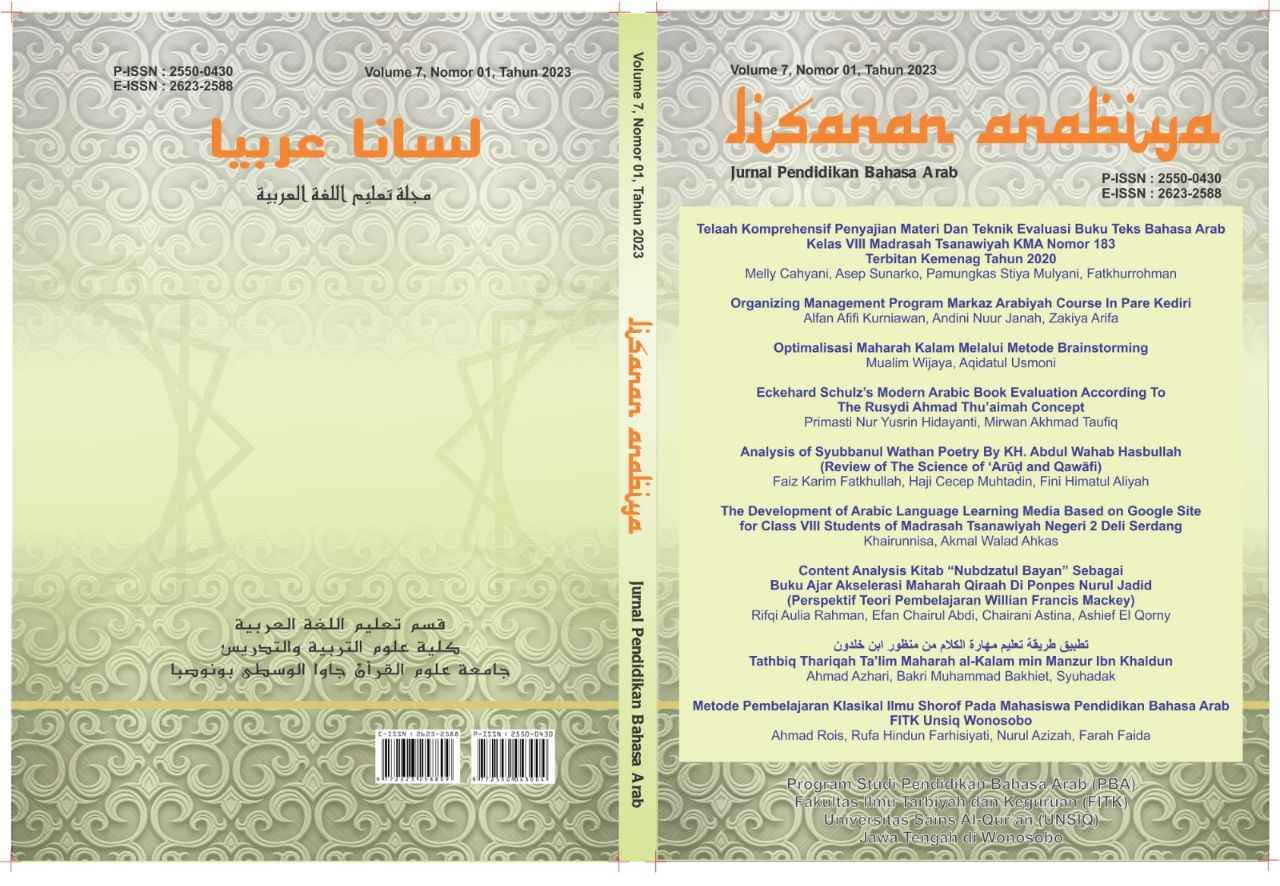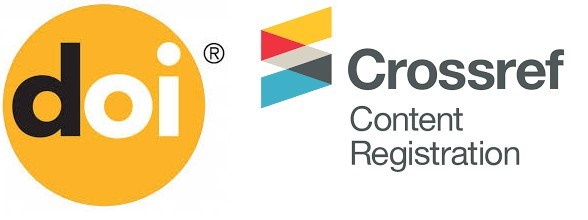Metode Pembelajaran Klasikal Ilmu Sharf Pada Mahasiswa Pendidikan Bahasa Arab FITK UNSIQ Jawa Tengah
DOI:
https://doi.org/10.32699/liar.v7i1.4615Keywords:
Learning Method, Classical Method, Sharf, ArabicAbstract
The purpose of this study is to describe Shorof learning using classical methods that are usually used in Islamic boarding schools. This research was carried out at the PBA FITK Unsiq Wonosobo study program. This research uses a type of field research with a qualitative approach. Data collection by means of interviews, observation and documentation. The research instrument is the researcher himself who makes guidelines in data collection. Data analysis using trianggulation. The results of the study produced findings related to supporting and inhibiting factors for the implementation of classical methods in learning Shorof science
References
Ahnan, Maftuh, 1999, Metode Belajar Ilmu Shorof, Surabaya : Terbit Terang
Afandi, M., Chamalah, E., Wardani, O. P., & Gunarto, H. (2013). Model dan metode pembelajaran. Semarang: UNISSULA
Anwar, Moch, 2015, Ilmu Sharaf “Terjemahan Matan Kailani dan Nadzom Almaqsud berikut Penjelasannya”, Bandung : Sinar Baru Algensindo
Armai Arif, Pengantar Ilmu dan Metodologi Pendidikan Islam, (Jakarta : Ciputat Press,2002)
Busyro, Muhtarom, 2016, Shorof Praktis “Metode Krapyak”, Jogjakarta : Menara Kudus Jogjakarta
Assayyid Ahmad Al-Hasyimi, al-Qowa’idu al-asasiyyah li al-lughoti al-‘arabiyyah. (Lebanon, Dar Al-Kotob Al-Ilmiyah, 2009)
Amin Ali as-Sayyid, Fi Ilmi as-Sharfi, (Mesir: DarulMa’arif, 1976)
lexi, Moleong. 2002. Metodologi Penelitian Kualitatif. Bandung: PT Remaja Rosdakarya.
Muhtarom Busyro, As Shorf Al Wadhih Shorof “Krapyak” ( Yogyakarta, Pondok Krapyak, 1999)
Sugiyono. 2007. Metode Penelitian Kuantitatif Kualitatif dan R&D. Bandung: Alfabeta
Zaini, Abdullah, Munir, 2015, Ilmu Shorof untuk Madrasah Tsanawiyah Al-Futuhiyyah, Wonosobo :
Downloads
Published
Issue
Section
License
Authors who publish with this journal agree to the following terms:
a. Authors retain copyright and grant the journal right of first publication with the work simultaneously licensed under a Creative Commons Attribution-ShareAlike 4.0 International License. that allows others to share the work with an acknowledgement of the work's authorship and initial publication in this journal.
b. Authors are able to enter into separate, additional contractual arrangements for the non-exclusive distribution of the journal's published version of the work (e.g., post it to an institutional repository or publish it in a book), with an acknowledgement of its initial publication in this journal.
c. Authors are permitted and encouraged to post their work online (e.g., in institutional repositories or on their website) prior to and during the submission process, as it can lead to productive exchanges, as well as earlier and greater citation of published work (See The Effect of Open Access).












